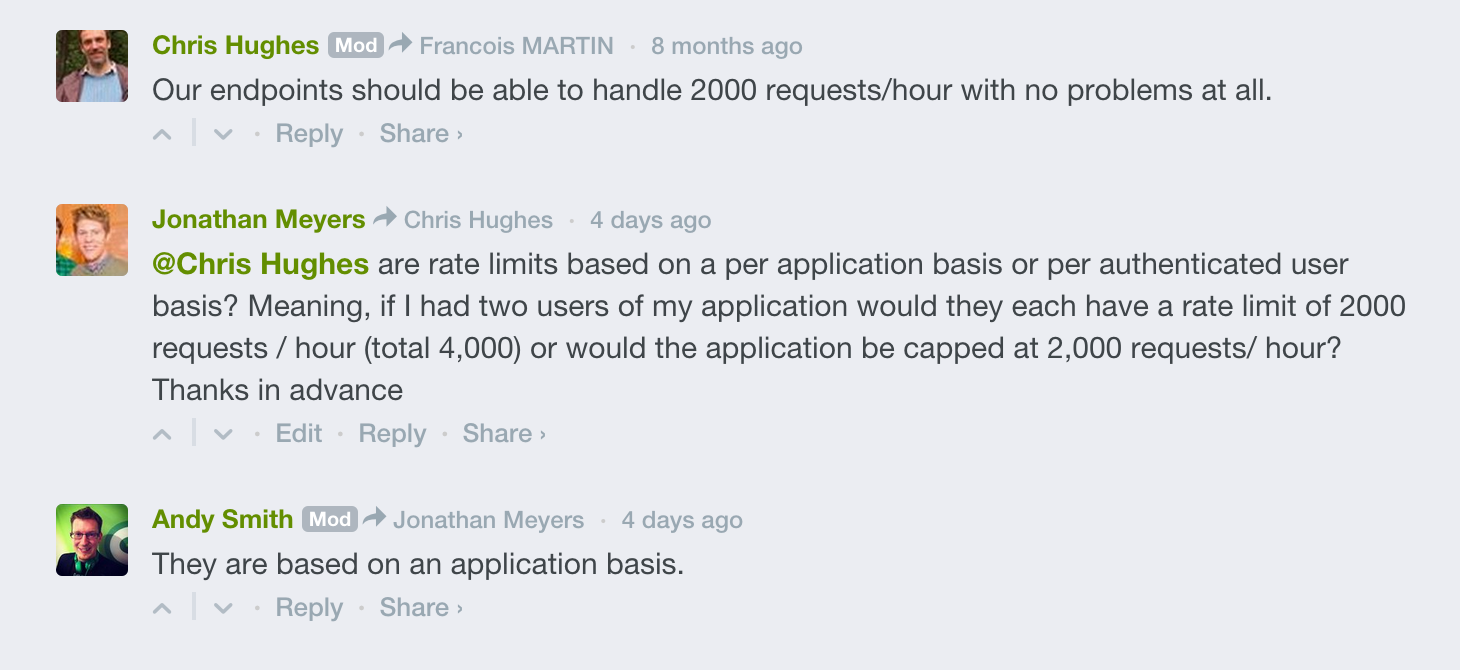Builder Beware: The Limitations of Popular APIs
This post came about during the research process of a project I’m building that involves heavy use of some of the web’s most popular media services. YouTube, Instagram, Spotify and Soundcloud all have APIs, but have very different approaches to how they let developers access them. One of my biggest concerns of working with these APIs was not the data I could request, but how much I could request and how fast. This post breaks down the current API usage for each of the aforementioned services.
YouTube:
Application Limit: 50,000,000 units per day or 30,000 units per user per second This limit describes a global quota pool. That means that any user or ip-address associated with a specific project will decrement the global quota pool.
In v3, there is a global quota pool (of 50 million units/day), and all API calls that are associated with a specific project in the Developers Console decrement quota from that pool. Therefore, it is theoretically possible for a single IP address or channel to consume all of the quota associated with an API registration, which could lead to an outage that affects other users. Source
The following is a code example, which obtains one page of a users likes, would incur a quota cost of 3 units.
GET https://www.googleapis.com/youtube/v3/activities?part=snippet&maxResults=50&mine=true&key={YOUR_API_KEY}
That means that every day a single project could get a maximum of 833,333,335 likes from the YouTube API.
(50,000,000/3) = 16,666,666 page results
16,666,666 * 50 liked videos per page
=833,333,335 liked videos
The real number of likes a project could get from the API each day would be less as various users would not make requests at the optimal 50 results per page.
The take away from this section is that the YouTube API has given developers enough runway to onboard a meaningful amount of users before any quota limits are reached. Google has channels for developers to request additional limits as well, however that functionality seems to be temporarily suspended.

Instagram employs a different quota approach compared to Youtube by allowing a local quota pool for each authenticated user of 5,000 units per hour per token.
We recommend that you use an Oauth token for the authenticated user for each endpoint, even in cases where it’s not required, since the rate limit for authenticated calls scales as you grow the amount of people using your app. Source
Instagram usually returns between 21-23 liked photos per API call. The code below deprecates the hourly quota of 5,000 by 1.
GET/users/self/media/liked
Theoretically, a single user could call between 105,000 and 115,000 liked photos per hour. However, Instagram will return an error if the API is called too frequently. Stating
Be nice. If you’re sending too many requests too quickly, we’ll send back a 503 error code (server unavailable).
Spotify
Spotify does not have explicit rate limits defined in its API, however a few posts on their API forum yielded the following conversation with two Spotify developers.

In short, Spotify has vauge rate limits regarding their various endpoints. Authenitcated requests will have higher rate limits. However, all rate limits are on a per application basis.
SoundCloud
I could not find any information regarding the rate limits of the Soundcloud API.Their documentation did have this to say…
We reserve the right, at our discretion, to impose restrictions and limitations on the number and frequency of calls made by your app to the SoundCloud® API. You must not attempt to circumvent any restrictions or limitations that we impose.
Are APIs Limitless…?
 …not quite.
…not quite.
I think a full understanding of rate limits is a pre-requisite for any developer interested in using an API. An API like Spotify can not be used to power an app that depends on individual user data as the rate limit will be hit before even 100 users are signed up. Conversley, the YouTube API, while still employing a per application rate limit, provides developers with enough runway to get significant traction and users. The most developer friendly API, out of the four discussed here is the Instagram API, as the rate limit scales linerally with every user onboarded. While there are many other factors to consider before integrating an API into one’s project, rate limits are a good place to start.